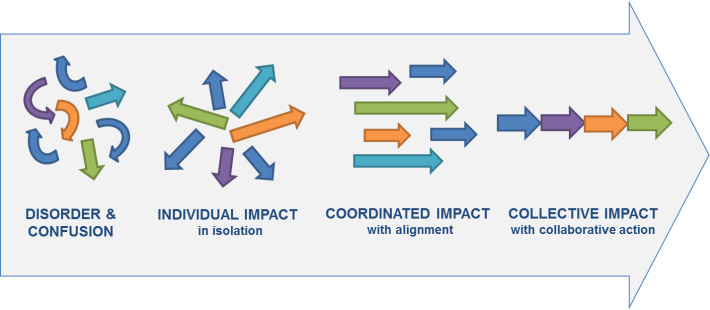Collective Impact

Collective impact is a structured approach to tackling deeply entrenched and complex social problems. Unlike traditional collaboration, which often involves disparate efforts with little coordination, collective impact brings together various organizations and stakeholders from different sectors to work towards a common goal. Here are the key components of collective impact:
- Common Agenda: All participants have a shared vision for change, including a common understanding of the problem and a joint approach to solving it through agreed-upon actions.
- Shared Measurement Systems: Collecting data and measuring results consistently across all participants ensures efforts remain aligned and participants hold each other accountable.
- Mutually Reinforcing Activities: Participant activities must be differentiated while still being coordinated through a mutually reinforcing plan of action.
- Continuous Communication: Consistent and open communication is needed across the many players to build trust, assure mutual objectives, and appreciate common motivation.
- Backbone Support Organizations: Creating and managing collective impact requires a separate organization(s) with staff and a specific set of skills to serve as the backbone for the entire initiative and coordinate participating organizations and agencies.
By focusing on these components, collective impact initiatives are able to leverage the strengths and resources of multiple sectors—such as non-profits, businesses, governments, and the community at large—to create lasting solutions to complex social issues. This approach recognizes that no single organization or sector alone can solve large-scale societal problems and that coordinated efforts are necessary for significant, systemic change.
The Human Services Department is proud to collaborate with United Way of the Lowcountry in advancing a collective impact approach. This structured methodology addresses deeply entrenched and complex social challenges by fostering coordinated efforts among diverse organizations and stakeholders across multiple sectors, all united toward a shared goal. 
References
Kania, J., & Kramer, M. (2011). Collective impact. Stanford Social Innovation Review, 9(1), 36-41.